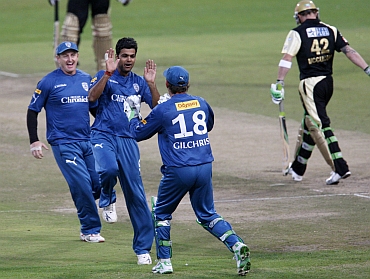
Harish Kotian looks at how limited-overs cricket evolved over the years
Twenty20 has taken cricket by storm. While it helped attract a large of number of fans, Tests and One-Day Internationals, the game's other formats, suffered, as audiences dipped, both on television and at the stadiums.
The International Cricket Council and players around the world are doing their best to save Test cricket, and the five-day format has managed to keep its most loyal fans glued, but it's the ODIs that seem heading for a slow death.
The 50-overs-a-side game was on the descent even before the advent of Twenty20 because of the overkill of cricket. Added to that batsmen-oriented pitches and rules made the game one-dimensional and, at times, boring for spectators.
The administrators introduced various changes over the years, introducing the 'Powerplay' and 'Supersubs', but, still, they have been unable to strike up the right formula.

As Simon Barnes, in his column for the Times, puts it: "The game has been rumbled. The players have worked it out. As a result, now that 50 overs is the standard format for a One-day International, we have a period between the end of the fifteenth over and the start of the 41st in which, the batters tip and tap their way on in nudged and nurdled singles that the fielding side are perfectly happy to concede.
Meanwhile, the bowlers send down slowed-down seamers or speeded-up spinners, aimed to prevent boundaries and there, by definition, to permit singles.
"It's become a convention, a sort of non-aggression pact, a Christmas truce that lasts for 25 overs. You score at 4.2 an over in this period and try to restrict the opposition to 3.7. You don't score too fast and we won't bowl too nastily."
Thus, it is not surprising that Cricket Australia sought to improvise further on the limited-overs format by introducing a controversial 45-over, split innings one-day format for trial in the National ODI Cup this season.

Take a look at Cricket Australia's new formula:
The new format includes 45 overs a team with split innings of 20 and 25 overs, a maximum of 12 overs by any one bowler and 10 wickets per team and 12 players per team (teams can bat any 11 of the 12 and field any 11 of the 12) among other changes.
The format allows a maximum of two bouncers per over and a new ball from each end at the start of the innings.
There won't be any replacement new balls or Powerplays.
As for the fielding restrictions, only two fielders will be allowed outside the circle between the first and fifth over and the 21st to 25th overs, while four would be allowed between the sixth and 20th over and 26th and 45th over.
The new format will be played in all 31 matches of the inter-state national one-day cup.
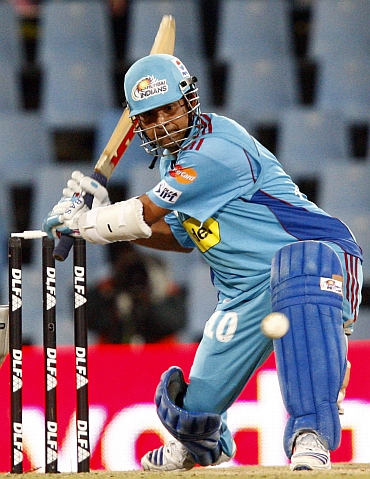
Sachin Tendulkar, who holds almost all the batting records in both formats, had been rooting for a long time that ODIs need to be split into two innings of 25 overs per side in order to dilute the undue importance of the toss, and keep interest alive.
"Today, we can tell the result of close to 75 per cent of matches after the toss. We know how the conditions will affect the two teams.
"But it [his suggestion] is not too dependent on the toss, because, for example, if it's a day-night match then both the teams will have to bat under lights," Tendulkar said.

For the record, the first limited-overs match was played on January 5, 1971, between Australia and England at the MCG after the first three days of the third Test between the countries were washed out.
With no possibility of a result, the officials decided to abandon the Test and entertain the crowd by a playing a One-dayer of 40-overs each on the final day, which the hosts won by five wickets.
Around 46,000 fans attended the game and, quite aptly, the late Don Bradman told everyone at the end of the game: 'You have seen history made.'
But it was the Kerry Packer revolution that saw the real advent of ODIs. In 1977, Packer established the rival World Series Cricket (WSC) by inviting all top players from around the world to play in a tournament.
He also introduced many features of ODIs that are now common, like coloured uniforms, day-night matches, white ball and dark sight screens. Television broadcasting also took a new turn under Packer, as he introduced several new features like multiple camera angles, stump microphones that enabled the audiences to hear the players on the pitch, and on-screen graphics.
The first match with coloured clothing featured the WSC Australians in wattle gold versus WSC West Indians in pink, in Melbourne on January 17, 1979.
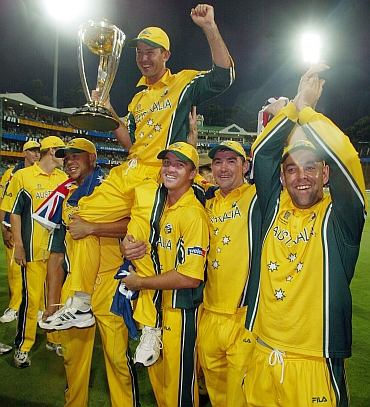
The inaugural World Cup was in 1975. The first three tournaments were held in England and officially known as the Prudential Cup, after the sponsors. The matches comprised 60 six-ball overs per team, played during daytime in traditional form, with the players wearing cricket whites and using red cricket balls.
In the 1987 World Cup, the games were reduced from 60 to 50 overs per innings, the current standard, because of the shorter daylight hours in the Indian subcontinent.
The 1992 World Cup, jointly-staged in Australia and New Zealand, introduced many changes to the game, such as coloured clothing, white balls, day/night matches, and an alteration to the fielding restrictions.
In 1992, the use of a third umpire to adjudicate run-out appeals with television replays was introduced in the Test series between South Africa and India.
Traditionally, in every ODI match, the fielding restrictions applied for the first 15 overs of each innings, which saw only two fielders being allowed outside the 30-yard circle.
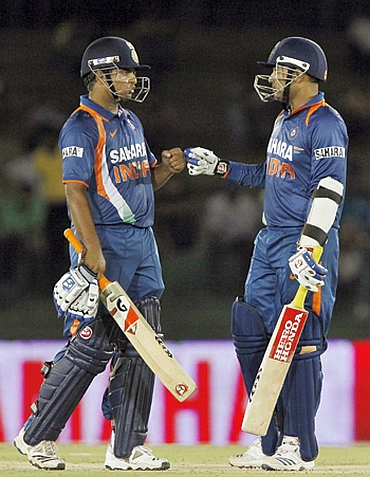
But in July 30, 2005, the ICC introduced Powerplays on a trial basis to spice up the game, especially the middle overs. Under the new ruling, the fielding restrictions applied to the first ten overs of an innings, followed by two more blocks of five overs each.
The rule was again tweaked and in October 2008, the batting side got the option to decide when to take one of five-over Powerplays, while the third Powerplay was at the discretion of the fielding captain.
The first Powerplay employed the normal fielding restriction wherein no more than two fielders were allowed to be positioned outside the 30-yard circle with two fielders in close catching positions.
There was some relief for the bowlers in the second and third Powerplays as they could have an extra fielder outside the 30-yard circle.
The ICC continued to experiment with the Powerplay ruling. In October 2007, the ICC again made a slight change that empowered the fielding captain to position three fielders outside the 30-yard circle in any one of the two five-over Powerplays.
The rule was changed further and the five-over Powerplays are now known as Batting Powerplay and Bowling Powerplay and can be taken anytime during the innings.
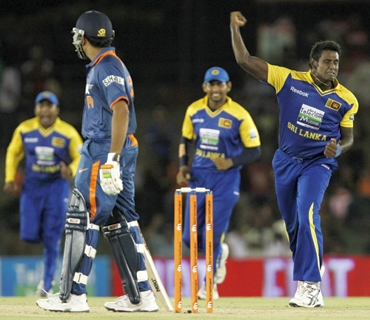
The ICC also unsuccessfully experimented with the Supersub ruling that allowed the introduction of a replacement player at any stage in the match. The player, who was nominated before the toss, could bat, bowl and field, and the player he replaced could take no further part in the game.
However, several international captains were unhappy with the experiment and reached a mutual agreement not to use the ruling, late in 2005. The teams continued to name Supersubs as required by the ruling but did not use them. And it was not long before that the ICC discontinued with the ruling, on March 21, 2006.
ODIs grew rapidly in the 1990s and in the early years of this decade, but the advent of Twenty20s crushed their growth.
This June, ODIs touched the historic 3000 mark. Interestingly, the 3000th ODI was played between the sides who contested the first ever ODI in 1971.
It took ODIs nearly 10 years to complete a century of matches. The first 1000 matches were completed in a span of more than 24 years. The next 1000 took a little less than seven years, while the next 1000 needed just over seven years!

Another interesting element that will be added to ODIs is the Decision Review System, wherein umpires can review a decision, in case the batsmen or bowler is unhappy with it. The DRS, which has already been tried in Tests, will make its debut in the 2011 World Cup.
With T20 tournaments like the Indian Premier League and Champions League Twenty20 crowding the international calendar, the number of ODIs will surely go down in the years to come.
IPL also ushered in the 'Mongoose bat'. The Mongoose is specifically designed for Twenty20 cricket. The bat is unusual in that the blade is 33 per cent shorter than a conventional bat and the handle is 43 per cent longer.
It remains to be seen if the administrators can effect more rule changes and make ODIs more interesting for spectators, else 50-50 overs will die a slow death.
The 2011 World Cup, to be played in the sub-continent, will certainly be a big test for the 50-overs format. Its existence will hinges on that tournament.